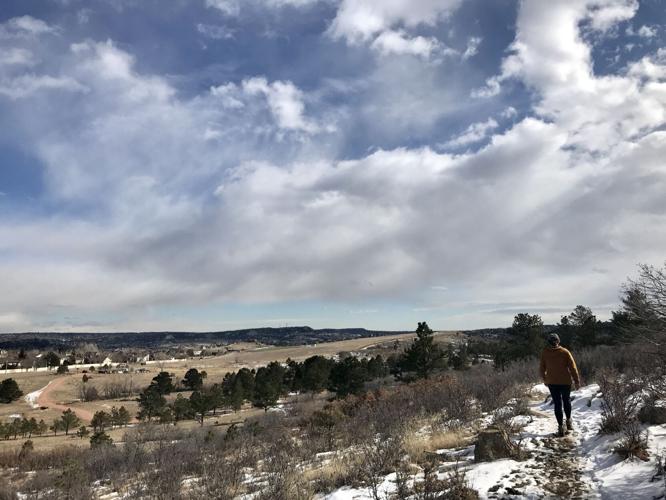To avoid snakes while hiking, stay on marked trails and avoid tall grass or bushes. When venturing into snake habitats, taking precautions is crucial to ensure your safety.
By being aware of your surroundings and making noise while hiking, you can alert snakes to your presence and give them a chance to slither away. Wearing long pants and closed-toe shoes can also provide added protection from potential snake encounters.
Additionally, carrying a walking stick or trekking poles can help you navigate the terrain and potentially scare off snakes with the vibrations they create. Being mindful of where you step and avoiding reaching into areas where snakes may be hiding are essential practices for a safe and enjoyable hiking experience. Remember that snakes play a vital role in the ecosystem, so it’s important to respect their habitat while taking necessary precautions to avoid conflicts.

Credit: www.alltrails.com
Choosing The Right Gear
Selecting suitable gear is crucial for hiking safety. Below are key considerations for avoiding snakes on the trail:
Proper Footwear
- Wear closed-toe boots for protection.
- Ensure soles are thick and sturdy.
Protective Clothing
- Opt for long pants and shirts for coverage.
- Lightweight, breathable materials work best.

Credit: www.nationalgeographic.com
Understanding Snake Behavior
Understanding snake behavior is crucial when hiking to avoid potential encounters. By learning about the habits and characteristics of different snake species, hikers can better protect themselves. Let’s delve into identifying common snake species and recognizing warning signs.
Identifying Common Snake Species
Snakes you may encounter while hiking include rattlesnakes, copperheads, and coral snakes. Recognizing these species is essential for your safety.
Recognizing Warning Signs
- Rattling sound: Indicates a rattlesnake nearby
- Triangular head: Common in venomous snakes
- Vibrating tail: A sign of agitation
Being aware of these cautionary cues can help you spot snakes before they get too close. Stay vigilant on your hiking adventures.
Trail Safety Measures
Hiking is an exhilarating activity to commune with nature, but it comes with potential risks, one of which includes encountering snakes on the trail. To ensure a safe and enjoyable hiking experience, it’s essential to adhere to trail safety measures that significantly reduce the likelihood of snake encounters and mitigate the impact if one occurs.
Staying On Designated Paths
Staying on designated paths greatly minimizes the risk of unintentionally stumbling upon a snake. When hiking, it’s crucial to stick to well-worn trails and avoid veering off into tall grass, bushes, or rocky areas where snakes may be hiding. Straying from designated paths can increase the chances of snake encounters, so remain on the designated trail to ensure a safer hiking experience.
Carrying First-aid Supplies
Carrying first-aid supplies is imperative for addressing potential snakebite injuries. When venturing into snake-inhabited areas, ensure to bring along a compact first-aid kit equipped with essentials such as bandages, antiseptic wipes, and a snakebite extraction pump. Having these supplies readily available can aid in prompt treatment in the event of a snakebite, allowing for immediate care while seeking further assistance.
Snake Encounter Protocol
Hiking is a thrilling outdoor adventure, but coming across snakes on the trail can be a nerve-wracking experience. To ensure your safety and peace of mind, it’s essential to follow the proper Snake Encounter Protocol. This protocol includes maintaining distance from snakes, reacting to a bite, and understanding the dos and don’ts of snake encounters. Let’s delve into each of these aspects:
Maintaining Distance
When encountering a snake while hiking, it’s crucial to maintain a safe distance to avoid any potential harm. Here’s how you can do it:
- Stay calm and resist the urge to panic.
- Move slowly and steadily away from the snake.
- Don’t try to approach or touch the snake.
- Give the snake enough space, at least 6 feet or more.
- Do not provoke the snake by throwing objects or making loud noises.
Reacting To A Bite
In the unfortunate event of a snake bite, it’s essential to stay level-headed and take immediate action. Follow these steps:
- Move away from the snake to prevent further bites.
- Calmly call for help or emergency services.
- Try to identify the snake, but do not waste time or put yourself at more risk.
- Keep the affected area still and positioned below the heart if possible.
- Do not apply a tourniquet or attempt to suck out the venom.
- Remove any restrictive items like jewelry or tight clothing near the bite area.
- Stay hydrated and avoid any food or drink.
It’s essential to remain as still as possible and wait for professional medical assistance to arrive.
Remember, prevention is key when it comes to snake encounters. Keep the following additional tips in mind:
- Wear sturdy, closed-toe shoes and long pants while hiking.
- Stay on designated trails and avoid walking through tall grass or bushes.
- Use a walking stick to probe the ground ahead of you.
- Be cautious when stepping on rocks or logs, as snakes may be hiding underneath.
- Stay aware of your surroundings, especially in warm, snake-prone areas.
By adhering to this Snake Encounter Protocol and taking appropriate preventive measures, you can enjoy your hiking adventures while minimizing the risk of snake encounters.
Precautions For Night Hiking
Night hiking can be an incredibly adventurous and thrilling experience, but it also poses unique challenges and risks. With limited visibility, it’s essential to take extra precautions to stay safe and avoid encounters with snakes. By following these precautionary measures, you can enjoy your night hike while minimizing the chances of any unpleasant surprises.
Using Lights And Illumination
Proper lighting is crucial when you’re night hiking to help you see your surroundings and potential hazards. Here are a few tips to ensure you have adequate illumination:
- Carry a powerful headlamp or flashlight with extra batteries.
- Attach a small, lightweight LED light to your backpack or clothing for increased visibility.
- Use a red light instead of a white light as it won’t disturb wildlife or affect your night vision.
- Always test your lights before heading out to ensure they’re functioning properly.
Being Extra Cautious
Night hiking requires heightened alertness and an extra level of caution. To avoid snakes and other potential dangers, keep the following tips in mind:
- Stay on well-marked trails and avoid walking through dense vegetation where snakes might hide.
- Walk with a deliberate stride and avoid stepping on rocks or logs where snakes may be concealed.
- Listen carefully for any rustling sounds, as snakes tend to be active during the cooler nighttime temperatures.
- Use trekking poles to probe the ground in front of you before taking each step.
- Regularly scan your surroundings, both on the trail and around your campsite, using your lights to illuminate any potential hazards.
Remember, prevention is the key to avoiding encounters with snakes while night hiking. By staying well-prepared and remaining vigilant throughout your hike, you can ensure a safe and enjoyable nighttime adventure in the great outdoors.

Credit: gazette.com
Frequently Asked Questions Of How To Avoid Snakes While Hiking
How Can I Avoid Encountering Snakes While Hiking?
To avoid encountering snakes while hiking, stick to well-traveled trails and make noise to alert snakes of your presence. Stay vigilant, watch where you step, and avoid tall grass or rocky areas where snakes may hide. Wearing proper footwear and staying on the trail can also help minimize the risk of encounters.
What Should I Do If I Encounter A Snake On The Trail?
If you encounter a snake on the trail, maintain a safe distance and give it space to retreat. Do not approach or provoke the snake. Stay calm and slowly back away. Remember, snakes are usually more interested in avoiding you than attacking, so giving them space is the best course of action.
Are All Snakes Venomous?
No, not all snakes are venomous. In fact, the majority of snake species are nonvenomous and pose no threat to humans. However, it is essential to be cautious and treat all snakes as potentially venomous, as it can be challenging to distinguish between venomous and nonvenomous species without expert knowledge.
It’s always best to err on the side of caution and avoid handling any snake you encounter.
Conclusion
In order to stay safe while hiking, it is essential to be aware of your surroundings and take necessary precautions. By staying on marked trails, wearing protective clothing, and being mindful of your surroundings, you can minimize encounters with snakes.
Remember to be cautious and respectful of their habitat, and always carry a first-aid kit for emergencies. With these tips in mind, you can have a worry-free hiking experience.